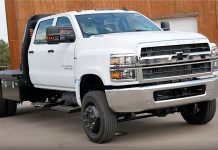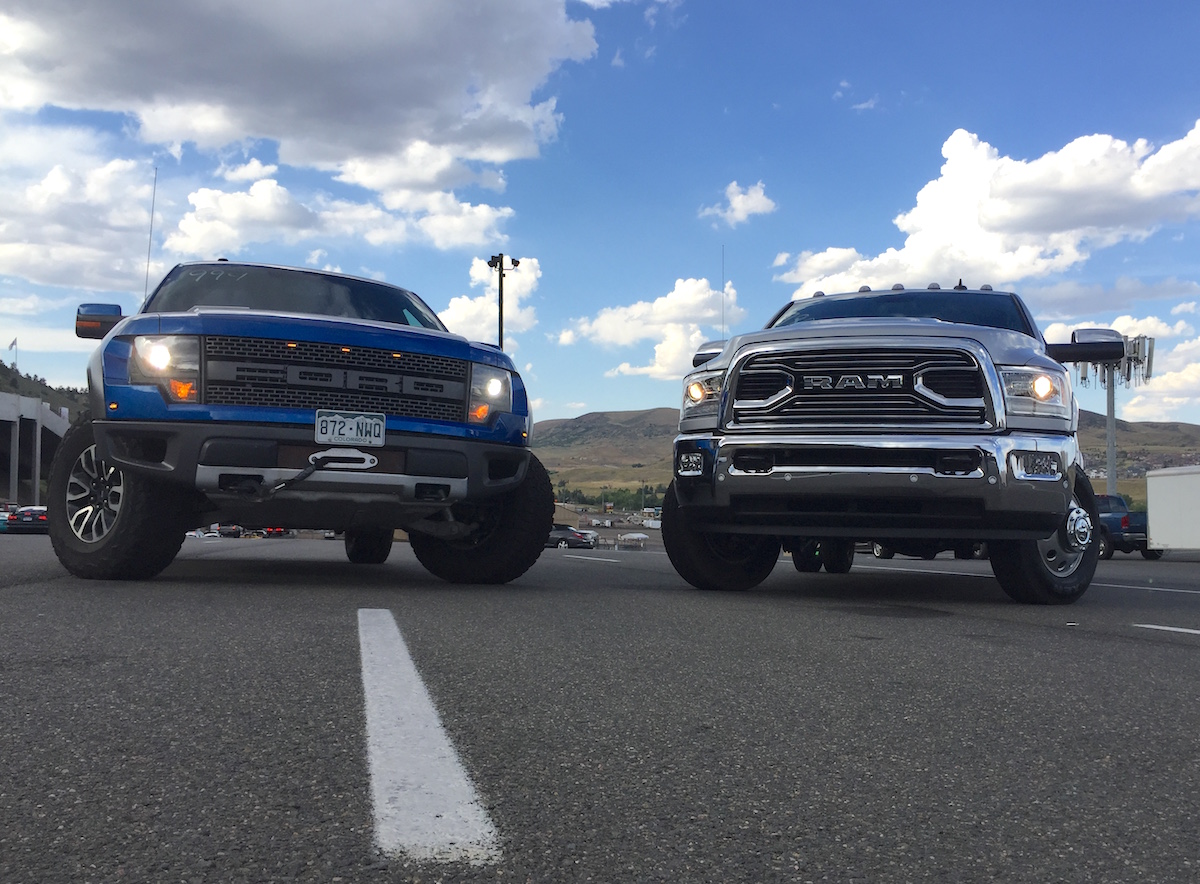Sponsored Content

Whether you like it or not, the future of trucking is autonomous. It’s coming sooner than you might think. Companies like Bosch are working on a suite of technologies to enhance truck driver’s comfort and safety. It’s also there to enable self-driving semi trucks that will see duty within the next several years. The goal is to make big trucks, and cars in general, safer and easier to operate. Automation may also enable lower shipping costs. If delivery of goods is cheaper, then all of us can benefit.
Bosch flew me out to their facility in Flat Rock, Michigan to see and experience the latest truck technologies first-hand.
Vehicle to Vehicle Communications
First up is the vehicle-to-vehicle (V2V) and vehicle-to-everything (V2X) communication technology. The road to fully autonomous vehicles is a long one, but having your truck receive information from roadside beckons and other surrounding vehicles can help find a quicker route or prevent accidents.
The idea is to equip trucks with additional antennas that can receive speed and direction of an approaching vehicle at an intersection, provide a warning if a collision is imminent, or help avoid the accident altogether. These antennas can also receive traffic and weather reports from roadside stations and re-route the vehicle. The majority of this communication is done behind the scenes. The drive or operator gets a message only if an action is required.
Ultrasonic Proximity Sensors
Another way that big semi trucks are getting smarter is with the use of ultrasonic sensors mounted in the front bumper. It’s the same idea as the parking sensors that are in your modern car, but Bosch is working on the sixth generation of the sensor system to help avoid slow speed collisions with people or any other objects. What’s the big deal? The big challenge with this system work in a semi truck is the air brakes interference.
The idea is to either provide the driver with green/yellow/red proximity object detection. The interface is similar as the one used on modern BMWs. If the big rig is equipped with autonomous driving technologies, then the truck could use the ultrasonic sensor data to avoid collision.
Side-view Cameras
Can a big truck get rid of its side mirrors and replace them with cameras and view monitors? Not quiet yet. Government regulations in the United States still require the use of side mirrors on big rigs. Side-mounted cameras and interior monitors allow for a smaller exterior mirror side, which in turn improves aerodynamics and efficiency of a truck. Every little bit counts when you think about long-haul trucks that rack up millions of miles over their lifetime.
Augmented Reality
Another cool feature is the use of augmented reality to help a technician work on a piece of construction equipment. Simply, take a smartphone or an iPad, point the camera at a piece of machinery, and quickly check which components need servicing or repair. It can also work with augmented reality goggles. A skid-loader or any other piece of earth moving or construction equipment can also be equipped with a 360-degree camera system to improve safety. It makes sense to reuse the technology that already helps pickup trucks and cars.
Remote Vehicle Control
What happens when a future self-driving truck or car (without traditional steering wheel and pedals) needs to be brought to another location for service? Could a trucker drive a big rig from one city to another without leaving their home office? Perhaps, remote control and operation is the way to go? Bosch set up a prototype side-by-side that is operated via a standard RC controller. Steering, brakes, and the accelerator can all be operated remotely. The gear selection is still a manual process on this early/internal prototype. It’s an interesting concept, and I must say – it’s a bizarre experience controlling a vehicle you are sitting in via remote control.
Self-Driving Big Rigs
Finally, let’s get back to the self-driving big rig. What enables a giant semi truck to drive on its own? It’s a complicated combination of sensors, radar, preloaded navigational data, image processing, and more. Naturally, steering ability is a critical piece of the puzzle. Bosch is introducing an electrically assisted and computer controlled steering system that does not replace, but works in conjunction with the existing hydraulic assist system.
There are several capabilities resulting from this double assist system. It provides for super easy steering effort for a human driver (if a human is still driving). It adds an additional layer of safety as you can see in video demonstration (video below). In the event that the engine shuts off while moving, and there is no more hydraulic assist – the electric assist allows the truck to maintain control and come to a safe stop. This steering system enables autonomous driving with the help of more sensors, radar, and computers. It is a building block to what Bosch is referring to as hub-to-hub autonomous driving.
Bosch explains that hub-to-hub autonomous driving means that self-driving big rig have certain long distance driving routes they can run in autonomous mode. For example, somewhere outside of Los Angeles to somewhere outside of Las Vegas; or outside of Houston to a hub outside of Dallas. Human drivers operate and drive the trucks inside large cities, but the trucks can take care of longer distances on the interstate by themselves. Bosch says this is the next step of where autonomous trucks are heading.
Let us know what you think about this topic in the comments below. Do you support a move toward autonomous big rigs, or are these still just too many unknowns and concerns?
















![Which is More Reliable: 3.5L EcoBoost or 5.0L V8? [Reader Question] Second-generation 3.5-liter EcoBoost engine](https://tfltruck.com/wp-content/uploads/2016/05/Second-generation-35-liter-EcoBoost-engine.jpg)
![Which Silverado Engine to Get: 5.3L or 6.2L V8? [Ask TFLTruck] 2016 chevy silverado](https://tfltruck.com/wp-content/uploads/2015/10/2016-chevy-silverado-grille.jpg)
